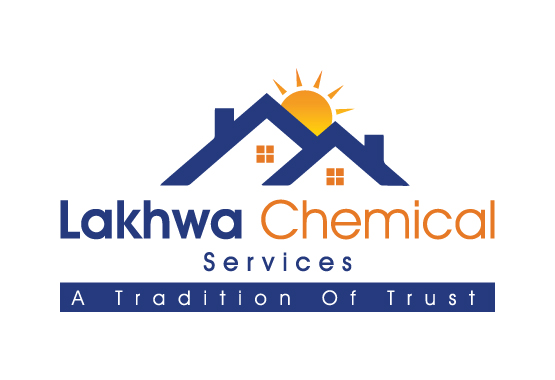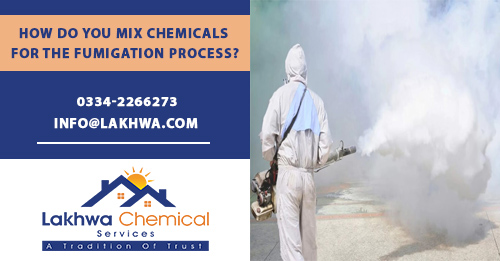How do you mix Chemical for the Fumigation Process?
To remove pathogens and pests from the indoor environment, agricultural fields, or storage facilities, fumigation process is a quick remedy. The effectiveness of fumigation hinges on the accurate mixing of chemicals and its calculated dosage. This blog provides the essential steps involved in developing effective solutions against pests.
Choosing the Right Chemicals
Selecting the appropriate fumigant is the cornerstone of a successful pest-control task. Commonly used fumigants include methyl bromide, phosphine, sulfuryl fluoride, and ethylene oxide. The choice of fumigant depends on factors, such as pest type, treated area, and the environmental conditions.
Dosage Calculation
Precise fumigant dosage is critical for achieving favorable results: It is measured in parts per million (ppm) or grams per cubic meter (g/m³). Dosage is determined by the level of infestation and the fumigant’s efficacy. Consult with experts to avoid under-dosing or over-dosing of chemicals.
Read More
Why Termite Proofing is Important for Bungalows in Karachi?
Importance of Foundation Termite Proofing in Karachi
Benefits of Inspection Before Termite Spray in Karachi
Safety Precautions
Before chemical mixing, stringent safety measures must be followed to protect the people involved in the process, nearby populations, and the environment. Personal protective equipment (PPE) such as gloves, masks, and eye protection must be worn. Adequate ventilation and protective barriers are also crucial to prevent unintended exposure.
Fumigation professionals must undergo rigorous training and remain updated with the latest developments in fumigation technology, chemical regulations, and safety protocols. The responsibility of handling and mixing fumigants demands a deep understanding of the potential risks and rewards associated with this critical process.
Proper Mixing Procedures
Instructions
Review the manufacturer’s guidelines and label instructions for the fumigant. Follow the instructions explicitly to ensure higher accuracy and more safety.
Equipment Selection
Use the appropriate equipment for mixing fumigants. Mixing containers, pumps, and hoses must be compatible with the chemicals being used to prevent reactions or contamination.
Measurements
Accurate measurements are of paramount importance: Use calibrated measuring devices to ensure precise quantities of fumigant and additives.
Mixing Sequence & Agitation
In most cases, additives or stabilizers are mixed with the fumigant. Additives help control the rate of fumigant release along with its effectiveness. Add additives to prevent adverse reactions. Proper agitation ensures uniform mixing of fumigant and additives. Mechanical agitation (using a pump or agitator), helps achieve homogeneity in the mixture and ensure quick extermination.
Read More
Best Ways to Apply Fumigation Spray in Karachi
Does Termite Proofing in Karachi Use Secure Chemicals?
What are the Risks Associated with Fumigation Methods?
Monitoring & Stabilization
Manage the temperature, pressure, and other parameters to ensure a smooth mixing process (without any complications). In specific cases, fumigant mixtures should stabilize before use. To achieve the desired properties, allow the mixture to settle or equilibrate.
Why is Formaldehyde used in Fumigation?
Fumigation involves the use of gaseous chemicals (fumigants) to eliminate pests from enclosed spaces. These fumigants, like methyl bromide or sulfuryl fluoride, can penetrate spaces and exterminate termites, cockroaches, and other insects. Formaldehyde is often used as a disinfectant, preservative, or in industrial processes.
Conclusion
The fumigation process plays a pivotal role in safeguarding stored commodities and public health. The successful execution of fumigation relies heavily on the precise mixing of chemicals. Choosing the right fumigant, calculating the appropriate dosage, adhering to safety precautions, and following proper mixing procedures are all essential components of a successful fumigation process.
Fumigation is a specialized field that requires expertise and knowledge. Improper mixing or handling of fumigants can lead to serious health hazards, environmental pollution, or ineffective pest control. Therefore, individuals involved in fumigation must approach the task with diligence, caution, and a commitment to upholding safety standards at all times.
To know more about fumigation and its applications, consult with experts from Lakhwa Chemical Services, one of the best companies in Karachi, Pakistan.




Leave a Reply
Want to join the discussion?Feel free to contribute!